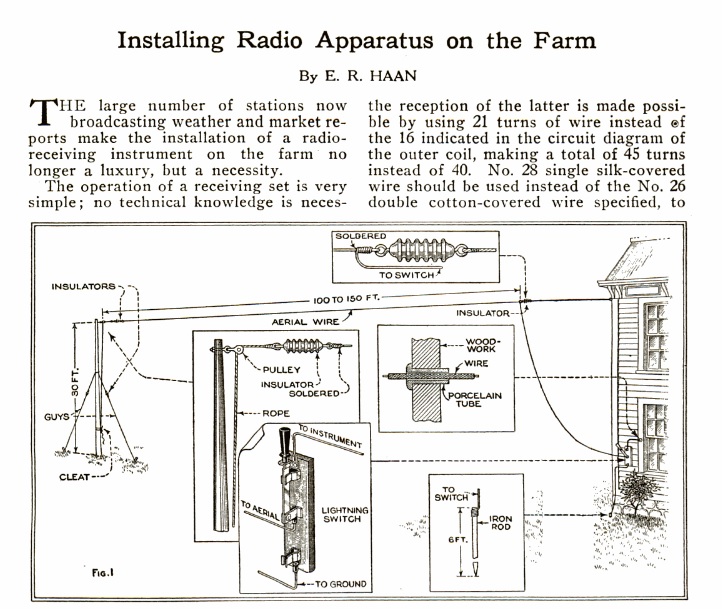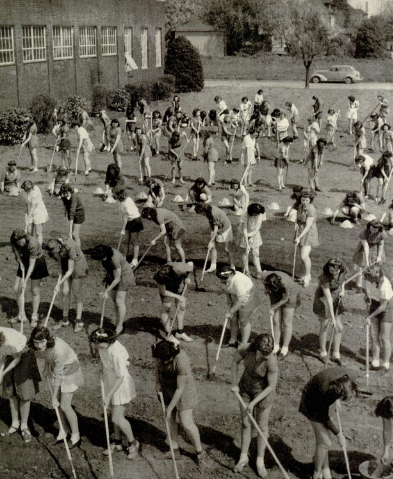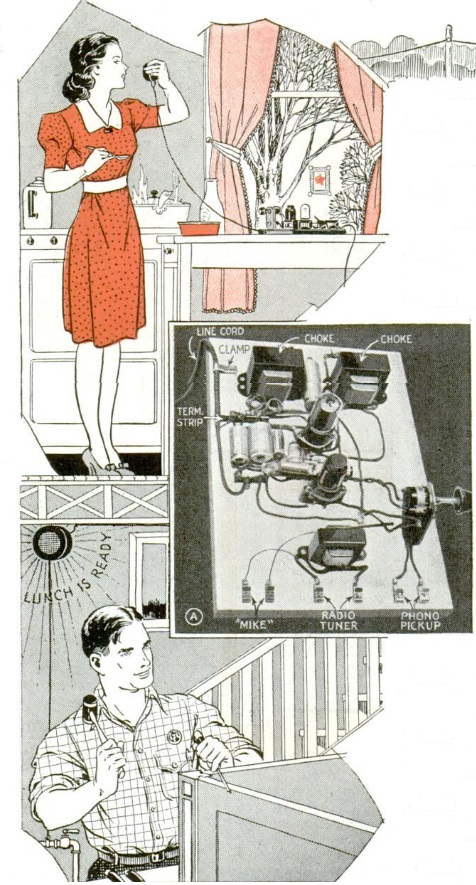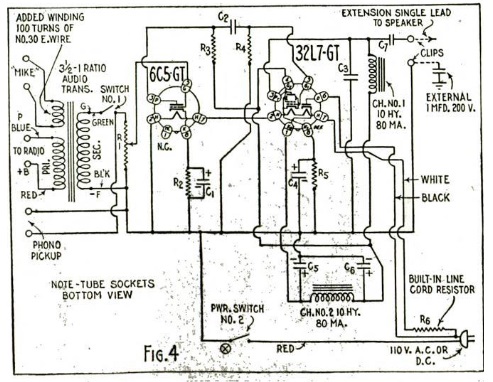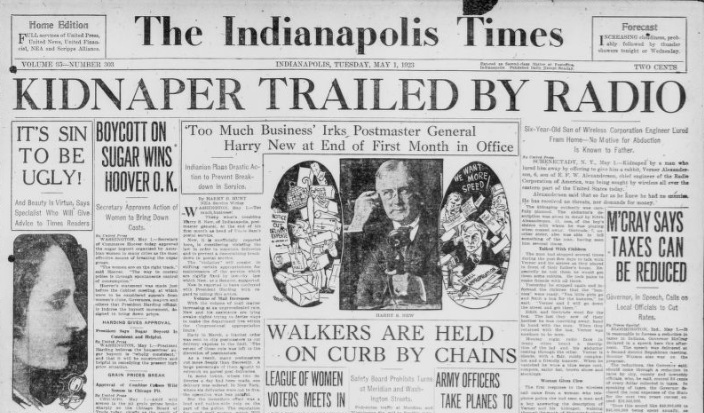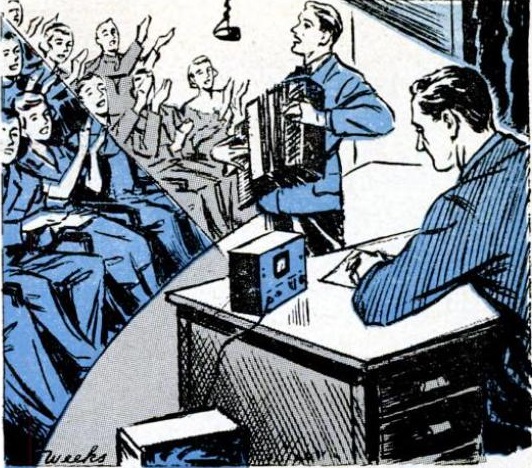 Every audience loves an accordion solo, as judged by the applause from this audience at a talent show. But the May 1953 issue of Popular Mechanics stresses the need to avoid even the appearance of impropriety. Therefore, the magazine showed how to make this electronic applause meter to register its impartial judgment as to the amount of applause, thus removing all questions of fairness and suggestions of favoritism. The simple three-tube circuit was just the ticket for amateur shows, parties, school affairs, contests, and similar group activities. It could also be used in noise studies in places such as factories or offices.
Every audience loves an accordion solo, as judged by the applause from this audience at a talent show. But the May 1953 issue of Popular Mechanics stresses the need to avoid even the appearance of impropriety. Therefore, the magazine showed how to make this electronic applause meter to register its impartial judgment as to the amount of applause, thus removing all questions of fairness and suggestions of favoritism. The simple three-tube circuit was just the ticket for amateur shows, parties, school affairs, contests, and similar group activities. It could also be used in noise studies in places such as factories or offices.
An 8 inch speaker was pressed into service as the microphone. The amplifier was such that the gain decreased with the increase in sound level, making the output approximately logarithmic, just like the human ear. The meter was in the plate circuit of the second stage of amplification.
Of course, as with most electronic devices, the prices are much lower today. If you need an applause meter for your next talent show, you can easily find one on Amazon. You have the choice of the inexpensive handheld model, or to make sure there’s no suggestion of favoritism, you can put up one of the large displays so that the audience can see for themselves:
Some links on this site are affiliate links, meaning that this site earns a small commission if you make a purchase after using the link.


